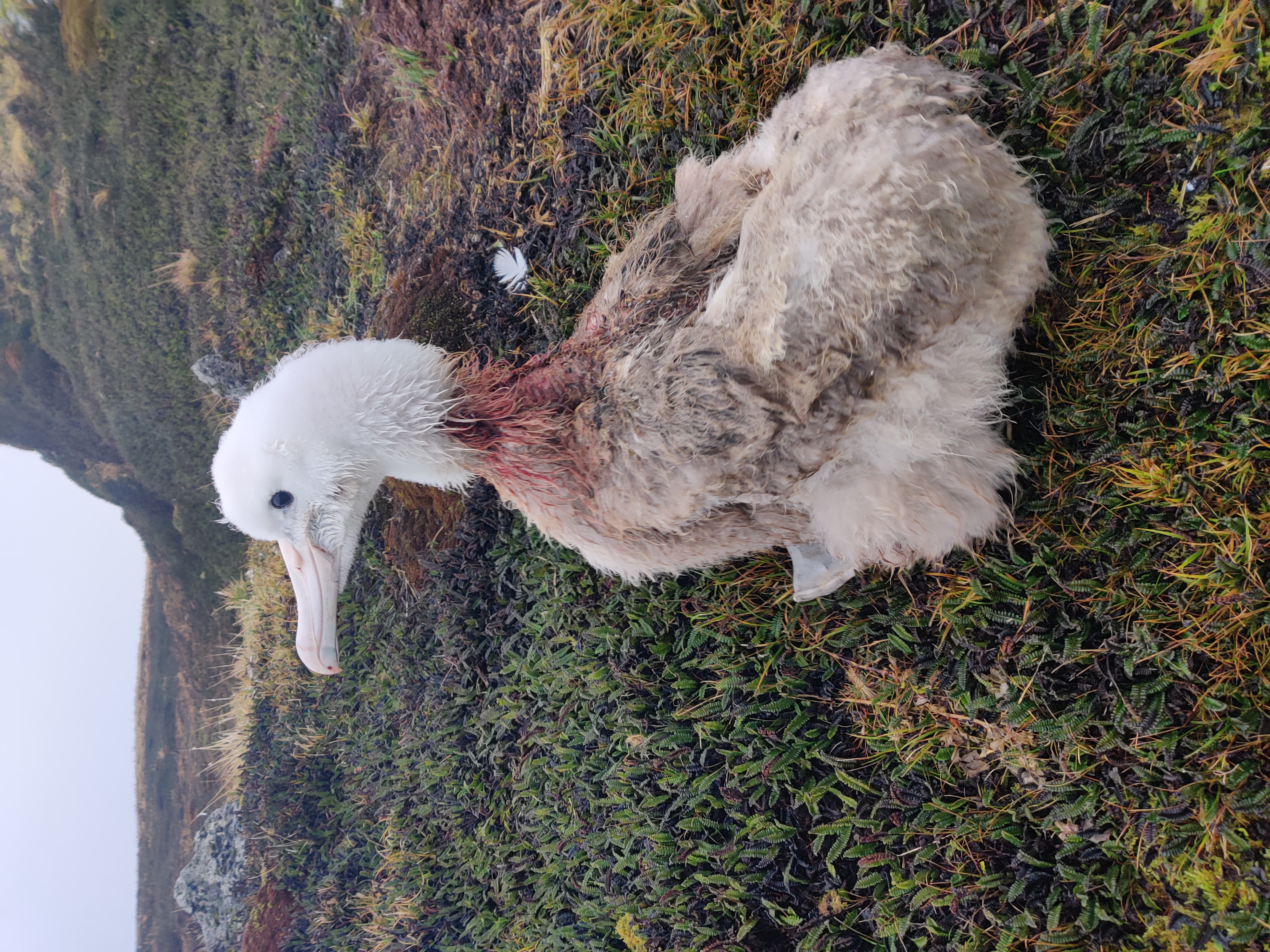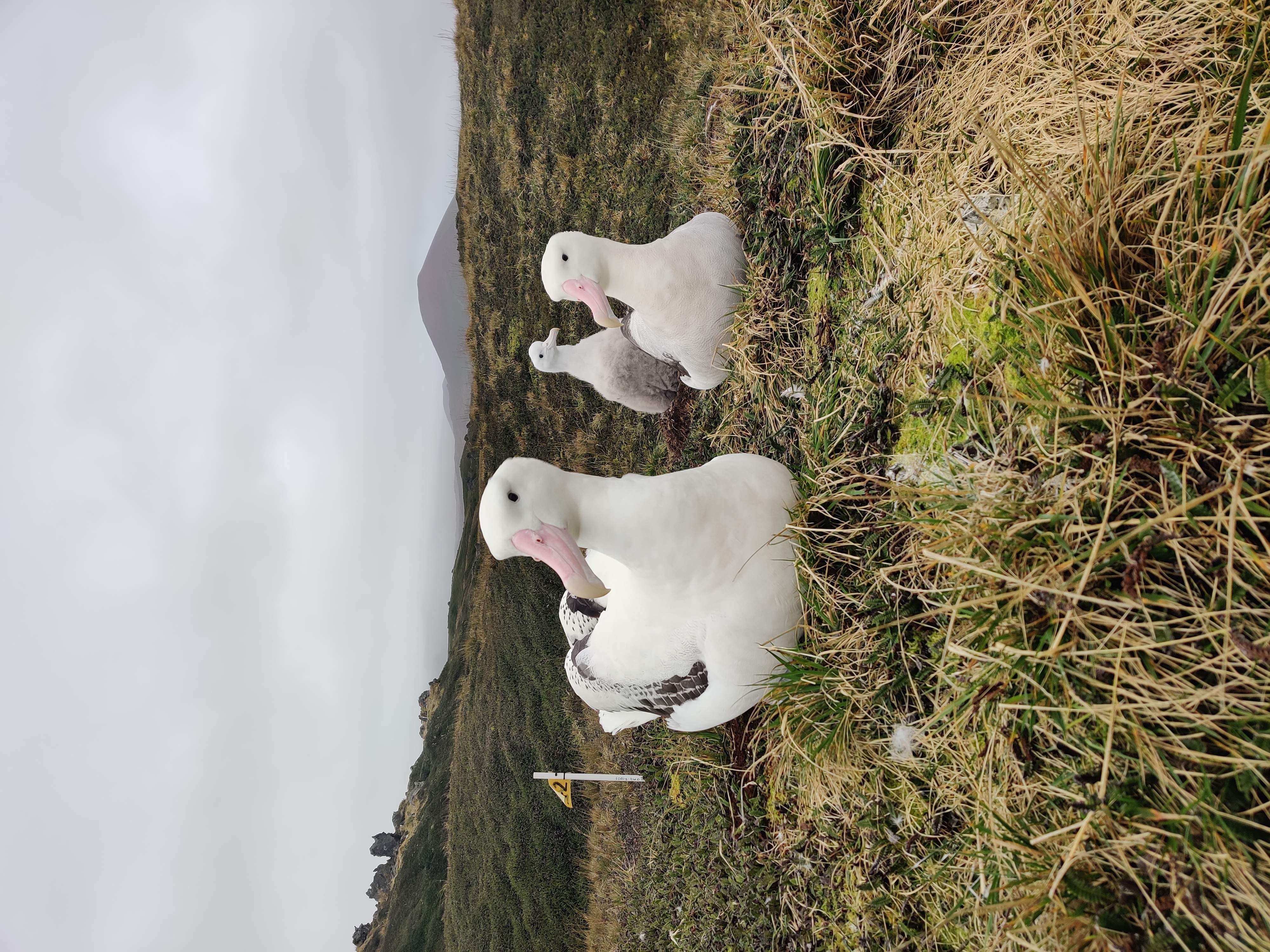
Aleks Terauds “down south”, photograph from the Australian Antarctic Division
The 2024 Scientific Committee on Antarctic Research (SCAR) Medal for International Scientific Coordination has been awarded to Dr Aleks Terauds of the Australian Antarctic Division where he leads the Marine Conservation and Management Program. Aleks commenced his research career studying the albatrosses of Macquarie Island, for which he received his PhD in 2002 from the University of Tasmania. His research into albatrosses and their conservation has resulted in a suite of scientific papers. Remarkably, he has also produced no less than four popular books, all lavishly illustrated, on Southern Ocean albatrosses and the sub-Antarctic islands where they breed. Aleks describes his current research as being largely applied, with a strong focus on improving and delivering environmental protection and achieving conservation outcomes in Antarctica, the Southern Ocean and the sub-Antarctic.
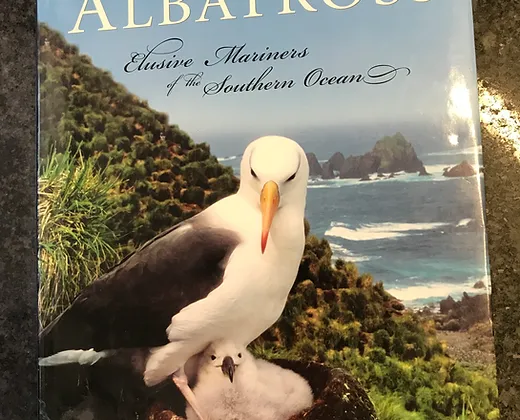
Albatross - Elusive Mariners of the Southern Ocean by Aleks Terauds and Fiona Stewart
Aleks’ medal citation follows:
“Dr Aleks Terauds has provided an exemplary personal contribution to advancing SCAR’s objectives regarding international research activities. As the Chief Officer of the Standing Committee on the Antarctic Treaty System (SCATS) from 2014-2019, his service to the SCAR community produced substantial outcomes for Antarctic biodiversity and the environment, following his role as Chief Officer of Ant-Eco and informing his role as Chief Officer of Ant-ICON.
Dr Terauds has coordinated multiple international workshops and was recognised for his extraordinary mentorship with the 2018 APECS International Mentorship Award. His ability to bridge the divides between science, management and international policy is commendable and brings about meaningful results at local and international scales.”
The presentation will be made at the SCAR Medals Award Ceremony at the SCAR 2024 Open Science Conference “Antarctic Science: Crossroads for a New Hope” on 23 August 2024.
Watch a video of Aleks Terauds talking about his research.
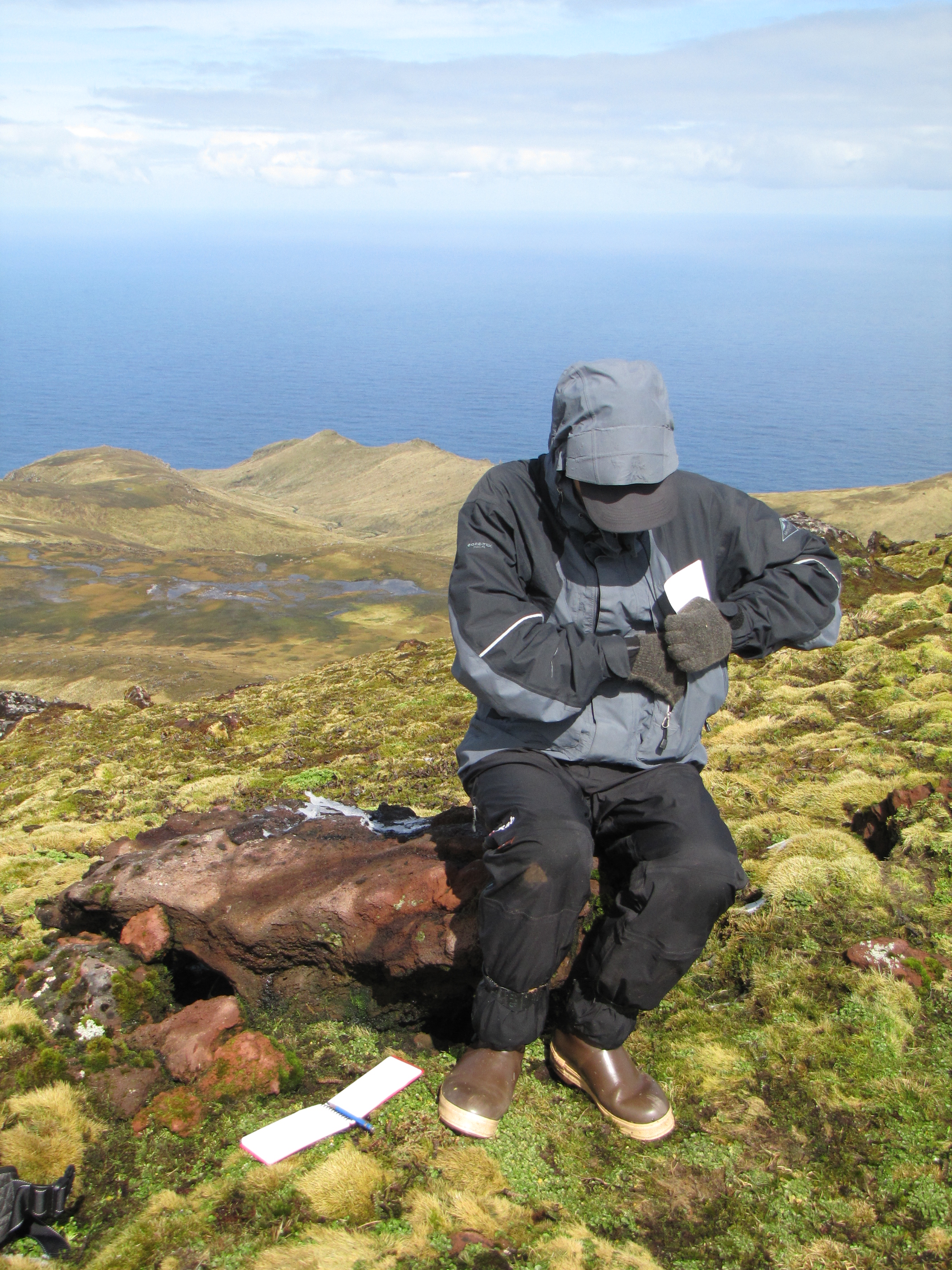
Aleks Terauds collects soil invertebrate samples in good (but still cold) weather on the top of Edinburgh Peak, the highest point at 910 m on Gough Island in 2013, photograph by John Cooper
On a personal note, I have hiked over much of both Gough and Marion with Aleks, acting as a guide and helping him with his research. Our hikes included summitting both islands in rare good weather together – good memories! I also enjoyed being a co-author and editor of one of his popular books, that on the Prince Edward Islands.
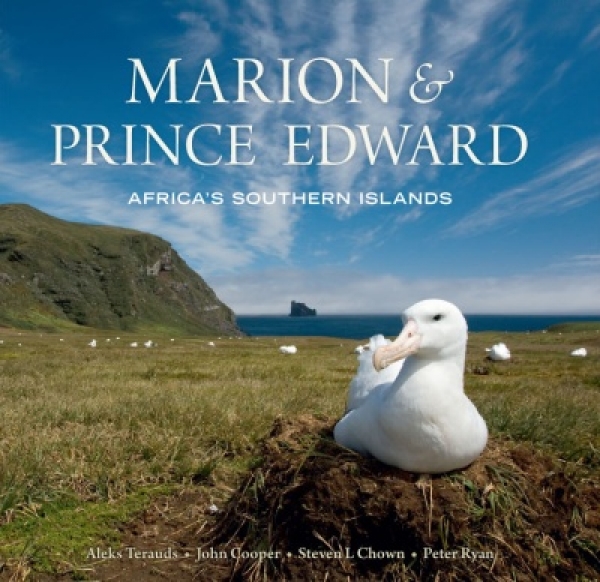
Marion & Prince Edward. Africa’s Southern Islands by Aleks Terauds, John Cooper, Steven Chown and Peter Ryan
Selected Publications by Aleks Terauds on ACAP-listed albatrosses and petrels and their breeding localities
Cleeland, J.B., Alderman R., Bindoff, A., Lea, M.A., McMahon, C.R., Phillips, R.A., Raymond, B., Sumner, M.D., Terauds, A., Wotherspoon, S.J. & Hindell, M.A. 2019. Factors influencing the habitat use of sympatric albatrosses from Macquarie Island, Australia. Marine Ecology Progress Series 609: 221-237.
Cleeland, J.B., Pardo, D., Raymond, B., Terauds, A., Alderman, R., McMahon, C.R., Phillips, R.A., Lea, M.-A., & Hindell, M.A., 2020. Introduced species and extreme weather as key drivers of reproductive output in three sympatric albatrosses. Scientific Reports 10, 8199.
Russ, R. & Terauds, A. 2009. Galapagos of the Antarctic. Wild Islands South of New Zealand. Christchurch: Heritage Expeditions. 224 pp.
Terauds, A. 2002. Population Biology and Ecology of Albatrosses on Macquarie Island: Implications for Conservation Status. Doctor of Philosophy, University of Tasmania. 304 pp.
Terauds, A., Cooper, J., Chown, S.L. & Ryan, P. 2010. Marion & Prince Edward. Africa’s Southern Islands. Stellenbosch: SUN PReSS. 176 pp.
Terauds, A. & Gales, R. 2006. Provisioning strategies and growth patterns of Light-mantled Sooty Albatrosses Phoebetria palpebrata on Macquarie Island. Polar Biology 29: 917-926.
Terauds, A., Gales, R., & Alderman, R. 2005. Trends in numbers and survival of Black-browed (Thalassarche melanophrys) and Grey-headed (T. chrysostoma) Albatrosses breeding on Macquarie Island. Emu - Austral Ornithology 105: 159-167.
Terauds, A., Gales, R., Baker, G.B. & Alderman R. 2006. Foraging areas of Black-browed and Grey-headed Albatrosses from Macquarie Island in relation to Marine Protected Areas. Aquatic Conservation –Marine Freshwater Ecosystems 16: 133-146.
Terauds, A., Gales, R., Baker, G.B. & Alderman, R. 2006. Population and survival trends of Wandering Albatrosses (Diomedea exulans) breeding on Macquarie Island. Emu - Austral Ornithology 106: 211-218.
Terauds, A. & Stewart, F. 2005. Albatross - Elusive Mariners of the Southern Ocean. Sydney: New Holland Publishers. 175 pp.
Terauds, A. & Stewart, F. 2008. Subantarctic Wilderness Macquarie Island. Crows Nest, Australia: Jacana Books. 176 pp.
John Cooper, Emeritus Information Officer, Agreement on the Conservation of Albatrosses and Petrels, 06 August 2024
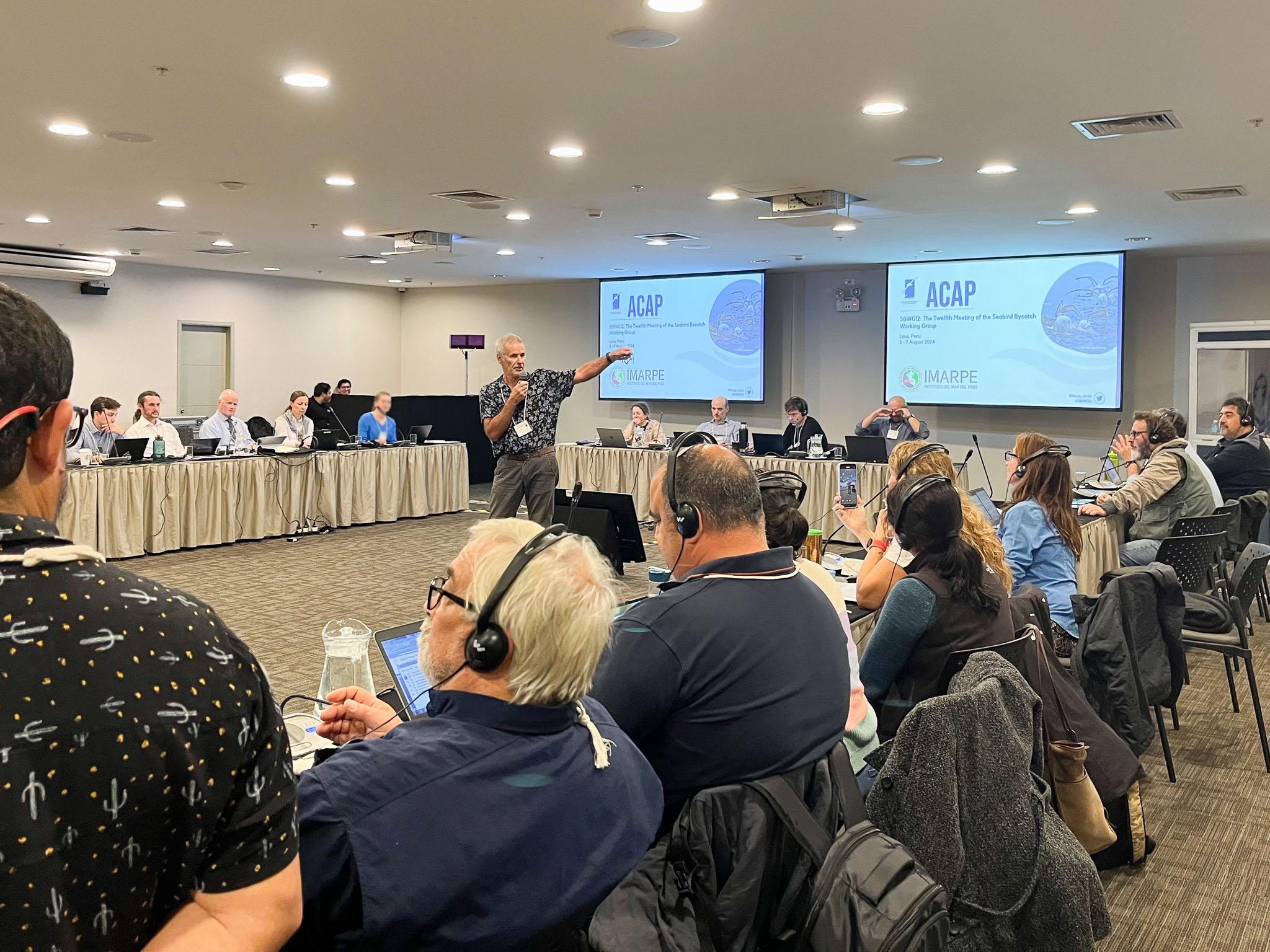 Nigel Brothers took to the floor to present his paper, "Minimum Weight at the Hook Allowance of 50 g Inclusive of Hook Weight for Pelagic Longlines"
Nigel Brothers took to the floor to present his paper, "Minimum Weight at the Hook Allowance of 50 g Inclusive of Hook Weight for Pelagic Longlines"
 English
English  Français
Français  Español
Español 



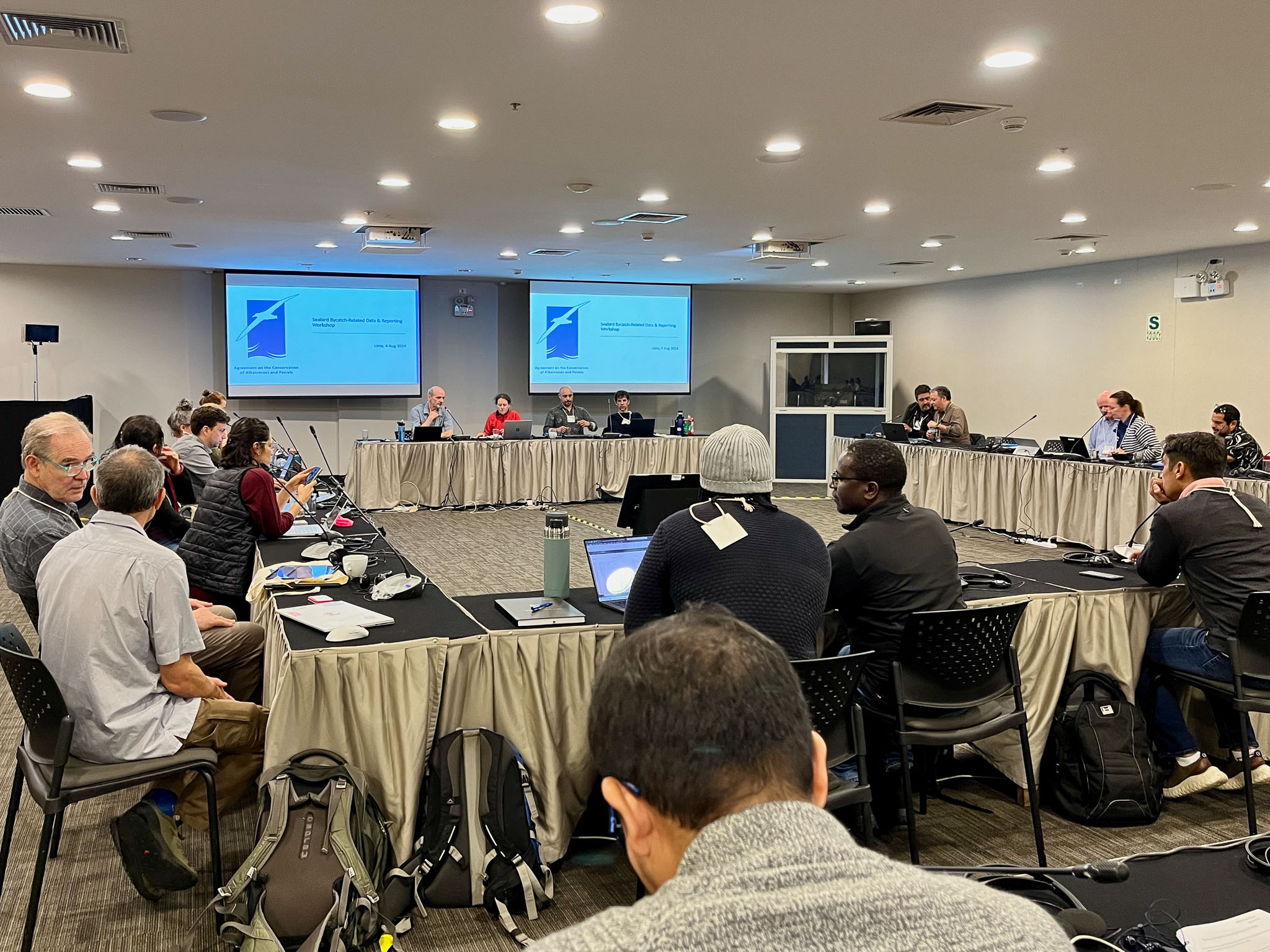 Participants of ACAP's Seabird Bycatch Workshop
Participants of ACAP's Seabird Bycatch Workshop
